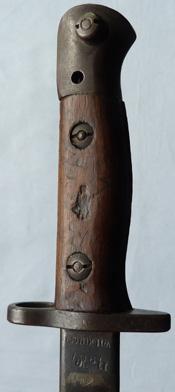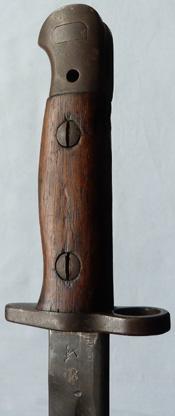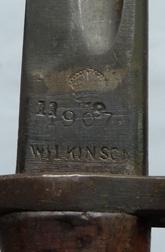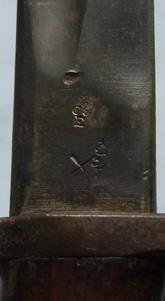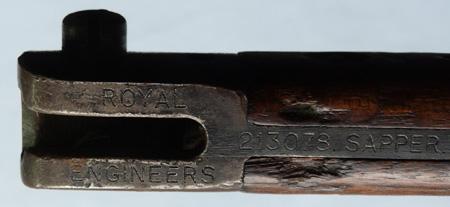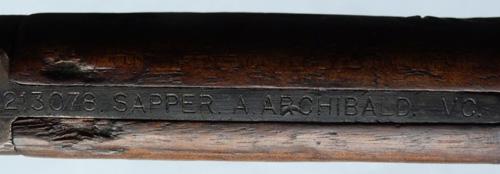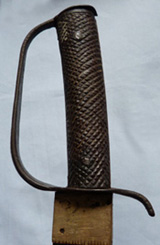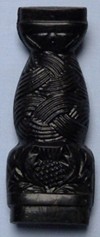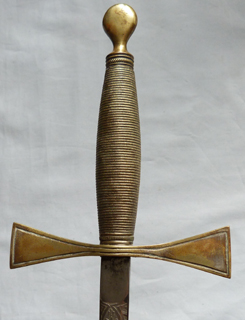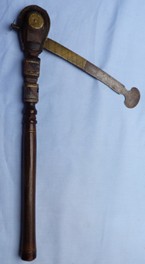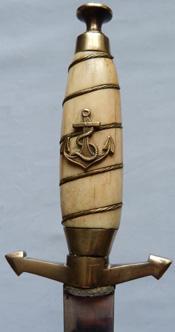British WW1 1907 Pattern Lee Enfield Bayonet – Named to Victoria Cross Winner
£495.00
A British WW1 Lee Enfield Bayonet named to Sapper Adam Archibald VC of the Royal Engineers.
In stock
A British WW1 Lee Enfield Bayonet named to Sapper Adam Archibald of the Royal Engineers, who won the Victoria Cross in 1918, in France. Bayonet dated to 1918 and made by Wilkinson. Interesting piece, worthy of further research. Blade length is 17 inches (21.75 inches overall). Here is a description of how he won this award.
“By the beginning of November 1918, Germany was on the verge of military and political collapse. On 4 November the Allies launched their last major offensive of the war. First, Third and Fourth Armies were ordered to push eastwards towards Mons, Mauberge and Avesnes. To maintain its advance, Fourth Army had to cross the Canal de la Sambre, a formidable obstacle, as the Canal was from 35 to 50 feet across, though the locks at Landrecies, Ors and Catillon were only 17 feet wide. However to aid the crossing, the sappers had prepared a large number of rafts on petrol-tin and cork floats. 75th Brigade, 25th Division, of which 1/8th Battalion The Royal Warwickshire Regiment formed a part, attacked Landrecies on the Canal from a position south of the Faubourg Soyères, north-west of the town. Lance Corporal W Amey distinguished himself by his gallantry in the fighting here. Though the main bridge was blown up by the Germans, the Battalion succeeded in taking the lock and crossing the canal. To the south-west, 96th Brigade attacked the canal north of Ors with the support of 218 Field Company, Royal Engineers. Acting Major A H S Waters, RE, and Sapper A Archibald helped construct a floating bridge for 2nd Battalion The Manchester Regiment. Second Lieutenant J Kirk managed to cross the canal on a raft to afford covering fire with a Lewis gun until he was killed. This bridge was soon destroyed by German artillery fire. Acting Lieutenant Colonel J N Marshall, 16th Battalion The Lancashire Fusiliers, superintended the repair of another bridge north of Ors, and was killed attempting to lead his men across it. It was during the battle for the canal at Ors that the poet Wilfred Owen was also killed. Further south, around Catillon, three crossings were planned. That over Lock No 1, east of Rejet-de-Beaulieu, nearly two miles south of Catillon, was allocated to 2nd Brigade. There was stiff German resistance but Major G de C E Findlay, 409 (Lowland) Field Company, RE, succeeded in bridging the dykes and lock and Acting Lieutenant Colonel D G Johnson, assisted the engineers and then led his men of 2nd Battalion The Royal Sussex Regiment, across the canal. The Germans had not only failed to prevent the British from crossing the Sambre, but by the end of the day the Fourth Army had forced them back about three miles along a fifteen-mile front.
Citation:
“For most conspicuous bravery and self-sacrifice on the 4th November, 1918, near Ors, when with a party building a floating bridge across the Canal. He was foremost in the work under a very heavy artillery barrage and machine-gun fire. The latter was directed at him from a few yards distance while he was working on the cork floats; nevertheless, he persevered in his task, and his example and efforts were such that the bridge, which was essential to the success of the operations, was very quickly completed. The supreme devotion to duty of this gallant sapper, who collapsed from gas poisoning on completion of his work, was beyond all praise. ”
Fourth Supplement to The London Gazette of 3 January 1919. 6 January 1919, Numb. 31108, p. 308
Text from the VC/GC Association
GOT ANY QUESTIONS? PLEASE FEEL FREE TO E-MAIL ME AT: sales@militariahub.com



